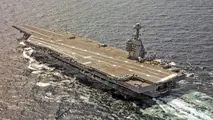Port of Amsterdam- Words and Actions
Ports are continually changing in tandem with economic and social developments. This has and always will be the case.

Ports are continually changing in tandem with economic and social developments. This has and always will be the case.
The Port of Amsterdam has undergone multiple transformations through the centuries – from a herring harbour into a staple market and ultimately into an energy port.
Koen Overtoom, CEO Port of Amsterdam, explains:
“We are now in a new phase: one in which we are focusing on circular and biobased activities and renewable energy. It started in 2008 with words. That‘s when we decided not to locate any new fossil fuel terminals in our port. This is because we saw back then that the energy landscape was undergoing a transition and that we had to diversify further.
“We recognized the circular opportunities for the businesses in our area. We began collaborating intensively with the waste energy and water purification company Clean Capital with the aim of converting residual materials and business waste into sustainable energy and raw materials.
“We launched our Vision2030 in 2014. It sets out our ambition for being Europe’s most sustainable seaport. This entails both major consequences and great opportunities. We are, for example, now co-owner of a wind turbine park in the Port of Amsterdam that provides electricity to businesses and households in the region.
“We invest in ‘Solar Energy in the Port’ on a large scale. The objective: to install 100,000 square metres of solar panels on the roofs of our own and our clients’ buildings in the port area by 2020.
“We are also teaming up with partners to look into the possibilities for using synthetic kerosene, and our own fleet runs on biofuels. We presented our Clean Shipping Vision in November 2017. It contains the goals to reduce sea cruise ship emissions quayside by 50 per cent by 2030 through greater investment in infrastructure such as LNG bunkering facilities and ship-to-shore power. But vision, goodwill and individual actions are not enough.
“Your clients hold the key to successful change. You must join forces with them. You need their infrastructure, knowledge and entrepreneurship to enable an energy transition. Our coal strategy is an excellent example. We announced in March 2017 that we are moving towards becoming a coalfree port in 2030.
“Now one of the dry bulk terminals with a predominant position in coal has freed up 28 football fields (20 %) of space for alternative bulk this quarter. This wasn’t an easy undertaking. It required having empathy and respect for each other and, above all, being convinced that together we can make the Port of Amsterdam and consequently the world a little bit better. That does not take a lot of words, but a world of actions. Actions speak louder than words.”
Source: worldmaritimenews



